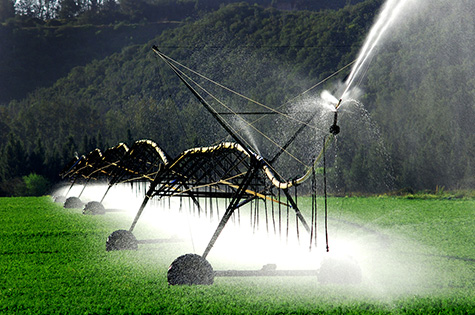Sourcing Irrigation Water for Agricultural Safety
By Jaan Koel
Water quality failures from water contamination may hit the news because of their impact on consumers but the implications for farmers are no less severe. Two prominent examples:
• the Walkerton, ON, coli outbreak in May 2000, which was caused by livestock runoff. Seven people died and thousands of others were sickened.
• the Havelock North episode in New Zealand, which occurred in August, 2016. The town’s drinking water was contaminated by campylobacter bacteria from a pond near the intake system, killing one and sickening more than 5,500 people.

If livestock runoff is contaminating a municipal water supply, chances are it is also getting into a farm’s irrigation system as well. Water used in irrigation is primarily used in the field, but it can also be used to wash tools, hands, holding tanks, containers, and other items. Here’s how the source of water affects the drive to maintain high standards and meet compliance:
Surface Water
Surface water, which includes ponds, open springs, lakes, rivers and streams has the highest level of risk because it’s impossible to control what can get into it. The main culprits are fecal contamination from wild and domestic animals, and chemical discharges from factories.
It’s important to check where runoffs can occur and take measures to prevent them from contaminating agricultural fields. Solutions might include fencing, vegetation such as trees, and physical barriers such as diversion berms.
Well Water
Well location is crucial and they should be sited away from flood zones, septic tanks, manure storage areas, and drainage fields. Casings should be inspected regularly and repaired if cracks are found. Wells should also be capped to prevent insects and animals from getting in.
Municipal Water
Municipal water is the safest of all, but also the most expensive. Not only is it produced to the highest microbiological standards, but it is also continually monitored at source to ensure ongoing quality and safety.
Monitoring is Key
Monitoring is fundamental to ensuring the quality of irrigation water from all sources and lab analyses should be done at least twice per year. Potential pathogens from any water source could include salmonella, listeria, hepatitis A, and parasites, among others.
The water we use to produce and distribute our food is of extreme importance to our health. Monitoring its quality on a regular basis, and taking as many precautions as possible to protect it, will help to ensure we all maintain the highest level of food safety possible.
About the Author
Jaan Koel is a respected food safety writer with a substantial portfolio developed over many years of front line writing experience. He began contributing to GFSR six years ago and is a regular contributor to other industry leading business-to-business publications. Aside from his expertise in the area of article writing, he has developed a strong credibility writing in the areas of corporate communications, public relations, government communications and marketing.

Categories: Science
Tags: irrigation water , irrigation water in food safety



